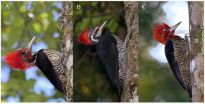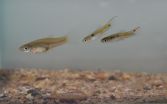(Press-News.org) PITTSBURGH--The historic outbreak of Ebola virus disease in West Africa that began in March 2014 and has killed more than 11,000 people since, has raised new questions about the resilience of the virus and tested scientists' understanding of how to contain it. The latest discovery by a group of microbial risk-assessment and virology researchers suggests that the procedures for disposal of Ebola-contaminated liquid waste might underestimate the virus' ability to survive in wastewater.
Current epidemic response procedures from both the World Health Organization and the Centers for Disease Control and Prevention advise that after a period of days, Ebola-contaminated liquid can be disposed of directly into a sewage system without additional treatment. However, new data recently published by researchers from the University of Pittsburgh, Drexel University, and the National Institutes of Health indicate that Ebola can survive in detectable concentrations in wastewater for at least a week or longer.
"Initial research by the WHO and CDC recommended disposing of Ebola-contaminated liquid waste into a latrine or treatment system without disinfection because the virus wasn't expected to persist in wastewater," explained Kyle J. Bibby, assistant professor of civil and environmental engineering at Pitt's Swanson School of Engineering and principal investigator of the study "Persistence of Ebola Virus in Sterilized Wastewater," published in the journal Environmental Science & Technology Letters. "However, we found that the virus persisted over a period of at least eight days."
The researchers gathered their data by observing the change in viral particle concentration in two samples, spiked with different concentrations of the virus, over an eight-day period. The testing was performed in a secured lab at the NIH. While the researchers observed a 99 percent decrease in concentration after the first day, the remaining viral particles were detectable for the duration of the experiment.
"These results demonstrate a greater persistence of Ebola virus in wastewater than previously speculated," said Charles Haas, co-author; head of the Department of Civil, Architectural, and Environmental Engineering; the LD Betz Professor of Environmental Engineering; and director of the Environmental Engineering Program. "While the Ebola virus was found to be generally less persistent than enteric viruses in wastewater, the identified survival period might suggest a potential of a wastewater exposure route."
Historically, it was believed that the virus could only be transmitted through direct contact with bodily fluids, but there have been cases where people contracted the disease without apparently coming in contact with infected fluids. This, the study suggests, could be an indication that large liquid droplets might be a vector for the virus--which means greater care should be taken when handling contaminated liquid waste. And given that an infected patient may produce up to nine liters of liquid waste per day, if infected liquid could carry the virus to someone else, this could be a significant risk factor.
The team also notes that the virus' seemingly early decay upon entry into wastewater might be due to the viral particles clumping together or latching onto other particles in the water, rather than the virus dying. These phenomena would actually make the viruses less susceptible to environmental factors, such as disinfectants, that would normally kill them off.
A proposed solution, already adopted by the WHO, would be to hold the contaminated liquid waste for a longer period of time before releasing it into the sewage system. Another might be to pretreat it with an antiviral agent, such as chlorine, although performance data on disinfectants is needed as well. These options would provide more time for the viral concentration to decay and for the remaining viruses to be inactivated.
"These results indicate that further research is needed with a more holistic approach to assessment of Ebola-infected wastewater, from storage to treatment to disposal and continued monitoring, including a precautionary approach to wastewater handling in all epidemic responses," Bibby said.
In addition to studying whether or not Ebola can actually be contracted from exposure to wastewater, the next step for this research thread would be to review variations in the wastewater composition, such as temperature, microbe population and pH level, the use of disinfectants, and the viral concentration's effect on the decay and inactivation of the virus.
INFORMATION:
NASA's Aqua satellite passed over Hurricane Loke as it continued moving north in the Central Pacific early on August 25.
At 01:10 UTC on August 25, 2015 (9:10 p.m. EDT/Aug. 24) the Moderate Resolution Imaging Spectroradiometer or MODIS instrument aboard NASA's Aqua satellite captured an infrared image of Hurricane Loke. The image showed the thunderstorms wrapping around the northern quadrant of the storm from east to west of the storm's center. Despite attaining hurricane status, however, there was no visible eye although microwave data taken earlier indicated an eye. ...
LAWRENCE -- To look tougher, a weakling might shave their head and don a black leather jacket, combat boots and a scowl that tells the world, "don't mess with me."
But this kind of masquerade isn't limited to people. Researchers recently have revealed a timid South American woodpecker that evolved to assume the appearance of larger, tougher birds.
Visual mimicry lets the Helmeted Woodpecker (Dryocopus galeatus) live on the threatened Atlantic forest turf of two bigger birds -- the Lineated Dryocopus lineatus and Robust (Campephilus robustus) woodpeckers -- reducing ...
August 24, 2015 - In the western foothills and mountain rangelands of the U.S., wild larkspurs (Delphinium spp.) are a major cause of cattle losses.
For the most part, grazing cattle can self-regulate consumption of larkspurs and avoid toxicity problems. However, when cattle eat too much, too quickly, or they eat low amounts continuously, toxicity can occur. Symptoms of toxicity include muscle weakness. Cattle also can become non-ambulatory and die.
In a recent study published in the Journal of Animal Science, researchers with the USDA-ARS Poisonous Plant Research ...
In the animal world, sexual reproduction can involve males attempting to entice or force females to mate with them, even if they are not initially interested.
This male behaviour is driven by conflicts of interest over reproduction and exerts selective pressures on both sexes.
A new study on guppies led by the universities of Glasgow and Exeter has given scientists insight into how this behaviour can lead to physiological changes, much like those in athletes who train to perform better.
Dr Shaun Killen, of the University of Glasgow, said: "Sexual coercion of females ...
Boulder, Colo., USA - In the last few months, it has once more become clear that large earthquakes can solicit catastrophic landsliding. In the wake of the Nepal earthquake, the landslide community has been warning of persistent and damaging mass wasting due to monsoon rainfall in the epicentral area. However, very little is actually known about the legacy of earthquakes on steep, unstable hillslopes.
Using a dense time series of satellite images and air photos, Odin Marc and colleague reconstructed the history of landsliding in four mountain areas hit by large, shallow ...
Washington, DC - August 25, 2015 - Scientists in the Center for Infection and Immunity at the Mailman School of Public Health have discovered a new virus in seals that is the closest known relative of the human hepatitis A virus. The finding provides new clues on the emergence of hepatitis A. The research appears in the July/August issue of mBio, the online open-access journal of the American Society for Microbiology.
"Until now, we didn't know that hepatitis A had any close relatives and we thought that only humans and other primates could be infected by such viruses," ...
TAMPA, Fla. - Women who have inherited mutations in the BRCA1 or BRCA2 genes are more likely to develop breast cancer or ovarian cancer, especially at a younger age. Approximately 5 percent of women with breast cancer in the United States have mutations in BRCA1 or BRCA2 based on estimates in non-Hispanic white women. Moffitt Cancer Center researchers recently conducted the largest U.S. based study of BRCA mutation frequency in young black women diagnosed with breast cancer at or below age 50 and discovered they have a much higher BRCA mutation frequency than that previously ...
The burning of incense might need to come with a health warning. This follows the first study evaluating the health risks associated with its indoor use. The effects of incense and cigarette smoke were also compared, and made for some surprising results. The research was led by Rong Zhou of the South China University of Technology and the China Tobacco Guangdong Industrial Company in China, and is published in Springer's journal Environmental Chemistry Letters.
Incense burning is a traditional and common practice in many families and in most temples in Asia. It is not ...
Depressed people who turn to their smart phones for relief may only be making things worse.
A team of researchers, that included the dean of Michigan State University's College of Communication Arts and Sciences, found that people who substitute electronic interaction for the real-life human kind find little if any satisfaction.
In a paper published in the journal Computers in Human Behavior, the researchers argue that relying on a mobile phone to ease one's woes just doesn't work.
Using a mobile phone for temporary relief from negative emotions could worsen psychological ...
MADISON -- Colorful and expressive, the eyes are central to the way people interact with each other, as well as take in their surroundings.
That makes amblyopia -- more commonly known as "lazy eye" -- all the more obvious, but the physical manifestation of the most common cause of vision problems among children the world over is actually a brain disorder.
"Most often in amblyopia patients, one eye is better at focusing," says Bas Rokers, a University of Wisconsin-Madison psychology professor. "The brain prefers the information from that eye, and pushes down the signal ...




